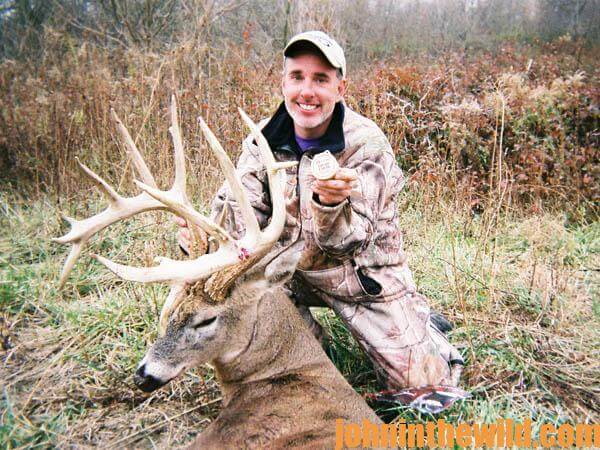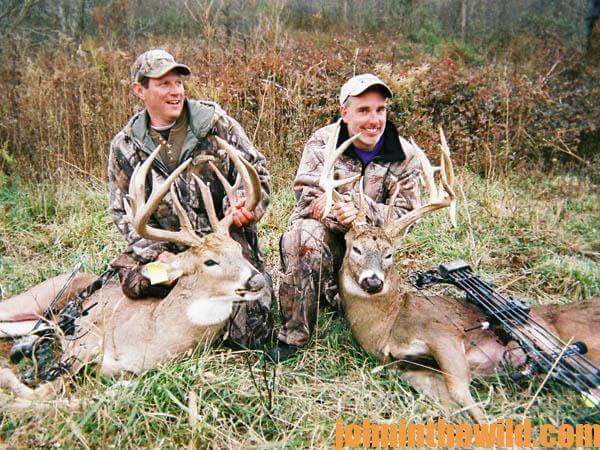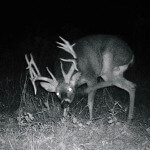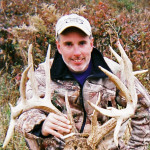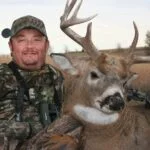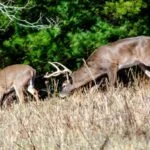John’s Note: Longtime deer hunter Michael Ahlfeldt of Shrewsbury, Pennsylvania, took his bow buck of a lifetime in 2010. To accomplish this goal, he first learned how to locate a piece of property with the potential to produce a trophy bow buck, how to manipulate the habitat on that property to hold a trophy buck, how to find that trophy buck and hunt him, and how to successfully take that trophy buck. This week, Ahlfeldt will show us the steps he took that you can follow to take the buck of a lifetime with your bow.
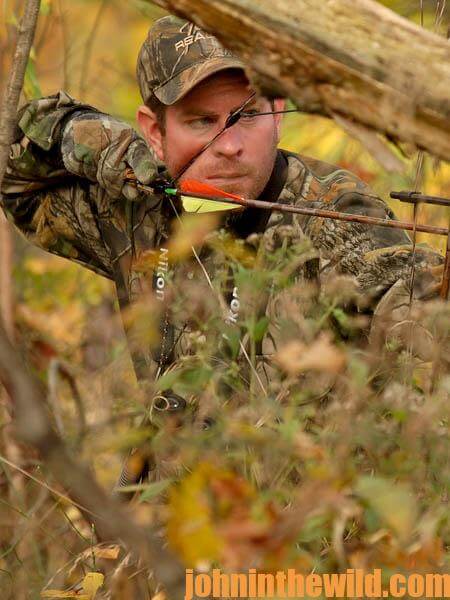 Michael Ahlfeldt and his friends studied their 235-acre Ohio property they’d leased carefully before they decided to plant their food plots.
Michael Ahlfeldt and his friends studied their 235-acre Ohio property they’d leased carefully before they decided to plant their food plots.
Ahlfeldt says, “We searched for bottlenecks and pinch points that would funnel deer into our food plots and also provide tree-stand sites where we could put-up our tree stands and be able to take the deer coming through the bottlenecks and the pinch points before they reached the food plots. If you’re setting-up a property for bowhunting, the locations of your food plots are critically important. If you have a food plot in an area where deer can come from any direction, finding the best place to put-up your tree stand may drive you nuts. The first year, we wanted to establish our food plots at the ends of these pinch points and bottlenecks, so most of the deer on the property and the deer passing through the land would have to use these pinch points to reach the green fields. At one of our pinch points, deer would have come-up out of a draw to reach the green field. We set-up our tree stands on the edges of the draw to take the deer well away from the green fields. This way, we could keep the deer coming to the green fields without anyone shooting at them. Another pinch point was on top of a ridge where deer came from either side of this ridge to go down to the green field or away from the green field.”
Because Ahlfeldt works four, 10-hour shifts a week, he was off enough days every other weekend to check his trail cameras on the lease.
He not only checked his trail cameras during his 4 off-days, but he also helped the landowner with fencing and electrical work.
Becoming friends with the landowner and helping to solve the landowner’s problems builds a stronger relationship between the hunters who lease the land and the landowner.
“The first time I saw Big Louie on a trail camera, I couldn’t believe his size,” Ahlfeldt remembers.
“After the first picture, Big Louie didn’t show-up on the trail cameras for the next 2 weeks.
This was the first day of Ahlfeldt’s 5-week vacation, and he’d planned to hunt all 5 weeks, if needed to take Big Louie or Captain Hook, the two biggest bucks the trail cameras had photographed on the property. Ahlfeldt learned that:
* green fields don’t ensure success for a bowhunter;
* the best place to plant a green field is where the terrain is necked-down, forcing deer to come through a small opening to reach the green fields;
* the study of the terrain will help to determine the most-productive sites to establish green fields and the spots to hang your tree stand, so you can intercept the deer before they reach the green fields or after they leave the green fields;
* the investment of your time and talent to help a landowner, will help you build strong relationships with the landowner and possibly help ensure a long-term lease of the property, thereby increasing your odds for getting more property to lease; and
* you only may have one opportunity to take a trophy buck, and if you miss that opportunity, you may not get another chance. So, if you arrive at your hunting club during daylight hours, hunt first. Then open-up the camp, and unpack after dark.
To learn more about deer hunting, you can get John E. Phillips’ Kindle eBooks, “How to Hunt Deer Up Close: With Bows, Rifles, Muzzleloaders and Crossbows,” “PhD Whitetails: How to Hunt and Take the Smartest Deer on Any Property,” “How to Take Monster Bucks,” and “How to Hunt Deer Like a Pro,” or to prepare venison, get “Deer & Fixings.” Click here to get these books.
Share this page with a friend!
About the Author
John Phillips, winner of the 2012 Homer Circle Fishing Award for outstanding fishing writer by the American Sportfishing Association (ASA) and the Professional Outdoor Media Association (POMA), the 2008 Crossbow Communicator of the year and the 2007 Legendary Communicator chosen for induction into the National Fresh Water Hall of Fame, is a freelance writer (over 6,000 magazine articles for about 100 magazines and several thousand newspaper columns published), magazine editor, photographer for print media as well as industry catalogues (over 25,000 photos published), lecturer, outdoor consultant, marketing consultant, book author and daily internet content provider with an overview of the outdoors.



